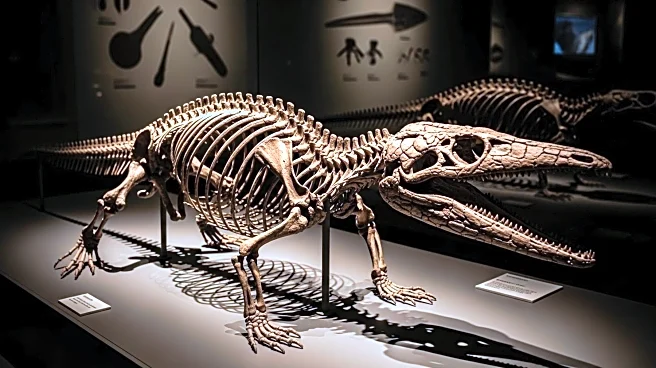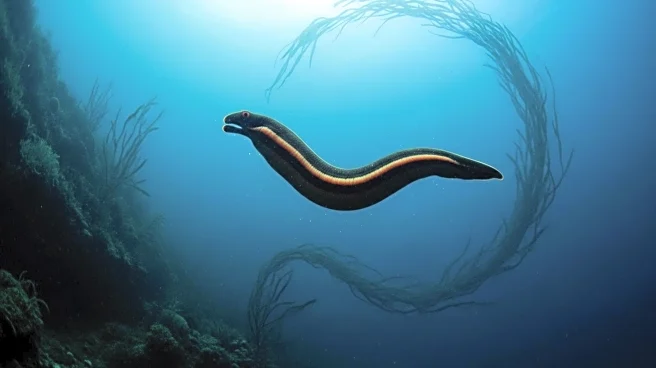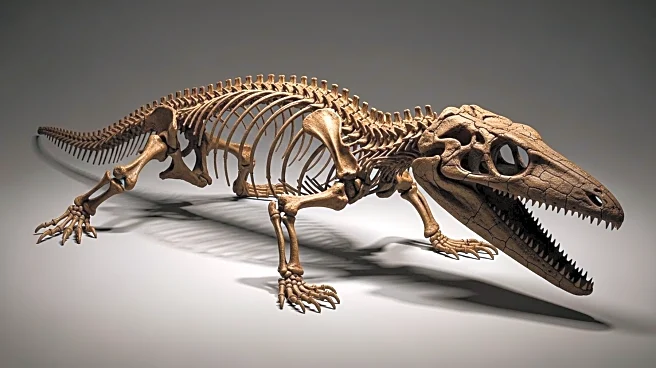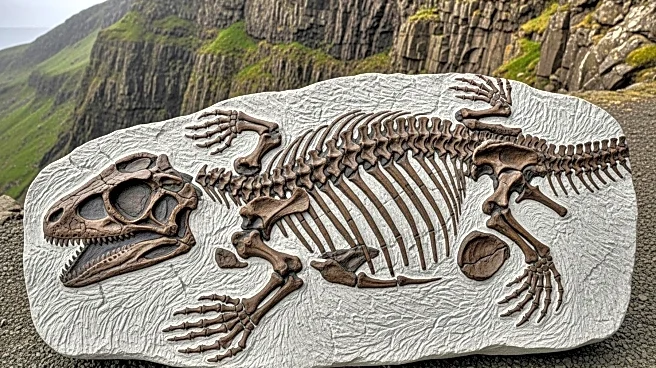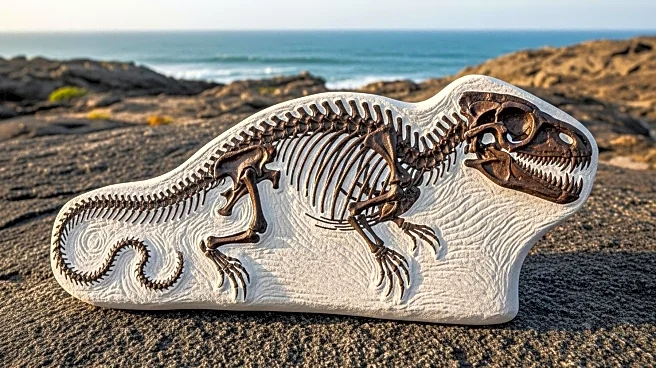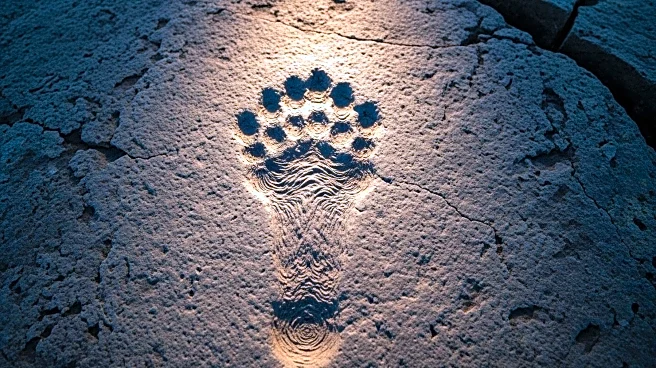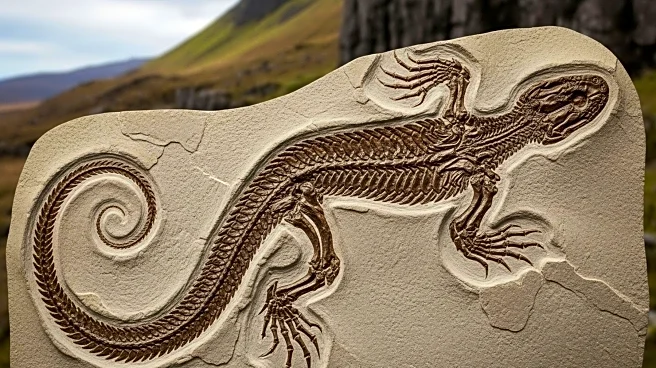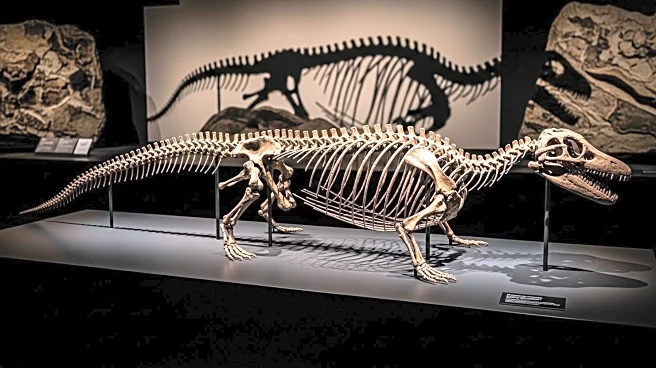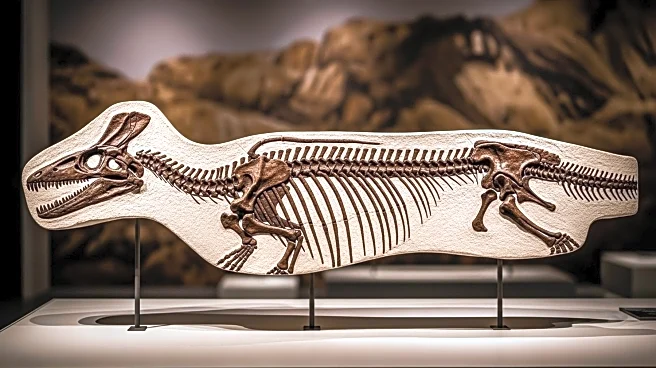What is the story about?
What's Happening?
A multinational team of researchers has uncovered a new species of hook-toothed lizard from the Jurassic period, named Breugnathair elgolensis, on the Isle of Skye in Scotland. This lizard, which lived approximately 167 million years ago, exhibits a unique combination of features seen in both snakes and geckos. The discovery, published in the journal Nature, challenges previous assumptions about the evolutionary history of snakes and lizards. The fossil, one of the oldest relatively complete lizard specimens, was found to have snake-like jaws and teeth similar to modern pythons, yet retained the short body and limbs typical of lizards. This suggests that snake-like predatory habits may have evolved independently in this extinct group.
Why It's Important?
The discovery of Breugnathair elgolensis provides significant insights into the evolutionary pathways of squamates, the group that includes lizards and snakes. By revealing a mix of primitive and specialized features, this finding challenges existing theories about the ancestry of snakes and suggests that evolutionary paths can be more complex and unpredictable than previously thought. This research could reshape our understanding of how modern reptiles evolved and adapted over millions of years, offering a new perspective on the diversity and adaptability of ancient ecosystems.
What's Next?
Further research is needed to determine the exact evolutionary position of Breugnathair within the squamate lineage. The team plans to continue analyzing the fossil using advanced imaging techniques to uncover more details about its anatomy and evolutionary significance. This discovery may prompt additional expeditions to the Isle of Skye and other Jurassic fossil sites to find more specimens that could provide further evidence of early squamate evolution.
Beyond the Headlines
The study highlights the importance of interdisciplinary collaboration in paleontology, involving experts from various countries and institutions. It also underscores the value of advanced imaging technologies in uncovering details that are not visible to the naked eye, allowing scientists to reconstruct ancient life forms with greater accuracy.
AI Generated Content
Do you find this article useful?
